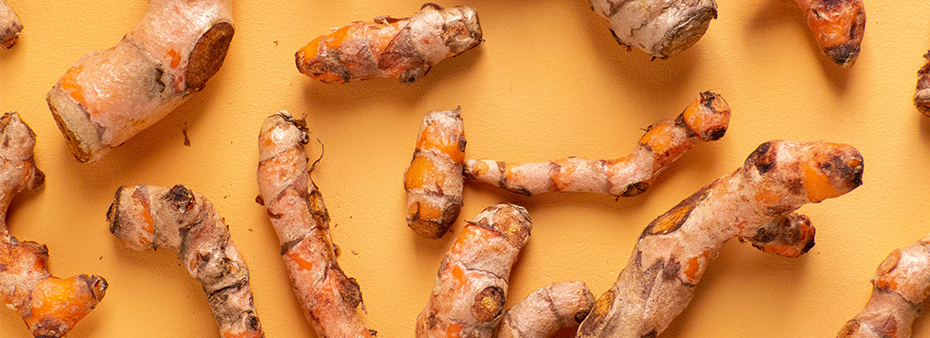Inflammation is the most common target for arthritis symptom management. However, to get to the root cause and ultimately improve outcomes, the target must incorporate the microbiome and consider systemic inflammation. Diverse pleotropic phytonutrients not only relieve local inflammation caused by the degradation of cartilage, but also enhance microbiome diversity and the gut epithelium, which helps reduce systemic inflammation. Here are the top phytonutrients I recommend for my arthritis patients:
- Turmeric. References to turmeric dating back thousands of years describe it as useful for a variety of inflammatory conditions.1 The matrix of active compounds found in the entire root helps normalize inflammation in multiple tissues, especially the joints and GI tract. 2,3,4
- Bromelain. The extract of bromelain has a history of folk medicine use, having been used for centuries in Central and South America. Derived from pineapple, Venezuelan chemist Vincente Marcano isolated bromelain in 1891 by fermenting the entire pineapple fruit. Bromelain is best known for its affect on joint health and degenerative musculoskeletal conditions.5 The powerful effects of the proteolytic enzyme also support GI and sinus health.6,7
- Quercetin. This polyphenol has proven ability to positively modulate inflammation. It was discovered in 1936, and was commonly referred to as Vitamin "P"—as in permeability—due to its ability to modulate the permeability of blood vessel walls. Found predominantly in onions, apples and dark cherries, quercetin suppresses the NF-?B pathway, which helps reduce pro-inflammatory cytokines.8 Quercetin, therefore, has a profound systemic effect on the entire inflammasome.
- Rutin. Rutin has played an integral role in health since ancient times, probably due to its diverse therapeutic properties. Found primarily in tea leaves and apples, it gives credence to the old saying “an apple a day keeps the doctor away.” Normalization of the inflammatory process is its hallmark, with studies showing it to be cardio-, neuro-, vaso-, and cyto-protective.
New Evidence on Maximizing Phytonutrient Therapy
Three years ago, I was attending a conference held by the Personalized Lifestyle Medicine Institute. The father of functional medicine himself, Dr. Jeffrey Bland, was presenting. Inflammation was the topic, and he made this very interesting observation. What if, he queried, increasing efficacy of turmeric does not rest on merely increasing curcuminoid levels or manipulating curcuminoids by introducing substrates to increase plasma or blood levels? Does increased absorption alone translate to increased efficacy?
He then went on to propose that other elements in the turmeric plant could have a profound effect on the gut microbiome interface, which is lost when focusing on only one part of the plant. This thinking was then eloquently advanced by a white paper by the Point Institute entitled, “Unlocking the Efficacy of Turmeric Root: Could the Absorption of Curcumin be the Wrong Key?” In this paper, it is noted that a complete turmeric matrix includes 45-55% curcuminoids, as well as other plant components such as polysaccharides, turmerone oil, turmerin protein, and dietary fiber.
Pilot studies have proven this natural combination at 250 mg or 500 mg can have a remarkable effect on markers such as sed rate, CRP and rheumatoid factors.9,10
Bromelain has also been subjected to new thinking and studies. For instance, a randomized clinical study compared standard of care medical therapy for acute joint patients with bromelain. Results showed very favorable outcomes for the bromelain group, who also saw benefits in liver and kidney function.11
Besides musculoskeletal benefits, bromelain also has strong clinical data supporting a wide array of therapeutic benefits in cardiovascular disorders, bronchitis, sinusitis, diarrhea and surgery recovery.
Recent understanding of quercetin now demonstrates its ability to support mitochondrial biogenesis 12,13 and optimize signaling of the spinal cord and peripheral nervous system.14 Quercetin has also been demonstrated to have neuroprotective action in the developing, adult and aging nervous system. Several in-vitro studies suggest that this neuroprotective action applies to neurotoxic agents, neuronal injury and neurodegenerative diseases.15
Last but not least is rutin, which has also been the subject of new research that corroborates its long history of medical use. This flavonoid has been found to enhance powerful antioxidants such as glutathione16 and supports joint health by decreasing the action of hyaluronidase and collagenase17 thus giving a favorable outcome in a study comparing 270 knee patients treated with rutin and bromelain to 266 standard of care patients.18
Clinical Application
Which phytonutrient is best to use? Personally, I have seen benefits from each one for exercise recovery, degenerative joint diseases, neurological symptoms, acute injuries, and supporting healthy inflammatory signaling.
Because these compounds work so well synergistically, however, I prefer using them together to enhance clinical outcomes, starting at a dosage 660 mg complete turmeric matrix, 240 mg bromelain, 240 mg quercetin dihydrate, and 50 mg rutin per day. Between meals is preferred since bromelain is a proteolytic enzyme and dosing up for quicker results is recommended as the patient tolerates. This dose should be maintained for a minimum of three months and taken fairly frequently (every other day) after that three-month window. Also, I recommend patients keep a product with all four nutrients on-hand in the event of a flare-up or injury.
Controlling pain and inflammation in arthritis patients starts by balancing prostaglandin, prostacyclin, leukotriene and thromboxane is possible via the dual mechanism of local and systemic anti-inflammatory effects. Patients don’t have to fear serious side effects of pain medications and can maintain function and stay active.
The weight of evidence for these phytonutrient compounds is strong, and your confidence in them will be equally strong as you observe your patients’ response to them.

Educated in both the Netherlands and the United States, Dr. Adrian den Boer is a board-certified and licensed Naturopathic and Chiropractic physician. In addition, Dr. den Boer is fully certified as a functional medicine doctor. Dr. den Boer has treated over 10,000 patients successfully by utilizing multiple resources to manage patient care. Most recently, he joined the Lifestyle Matrix Resource Center as the Clinical Expert serving the MSK Solutions Pain Recovery Program.



